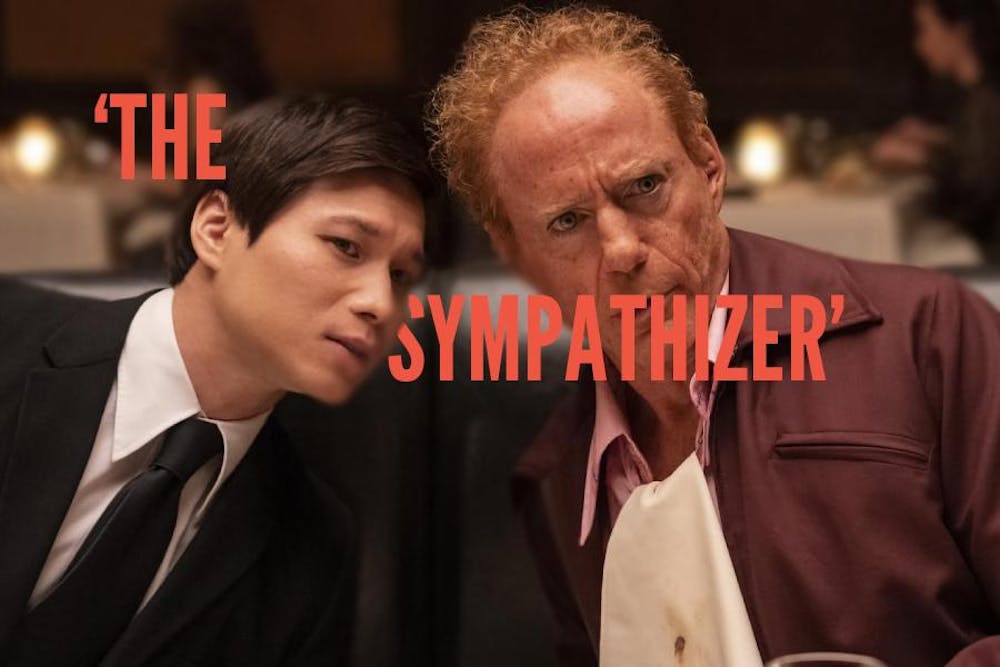The first two episodes of HBO’s “The Sympathizer” are enthralling — cinematic, bold espionage stories that illustrate the difficult questions of the Vietnam War and the fetishizing side of racism. While the show has not asserted itself as essential viewing quite yet, with the directorial and performance brilliance on display and the confidence to tackle such nuanced material without ever preaching at the audience, that breakthrough may be just on the horizon. And even if the show doesn’t realize all it can, it is already great, simultaneously pulsating and intellectually provocative.
The production design of “The Sympathizer” is immaculate. Light gleams off 1970s Saigon and Los Angeles, and one never doubts that these locations continue beyond the fully convincing frames. The most striking setting is a sieged runway where an American plane is trying to take off amidst North Vietnamese missiles; smoke trails from missiles drift down a dark sky hanging over burning foliage. It is the sort of set that deserves to be seen in a movie theater and a testament to HBO and A24’s artistic bravery, as this surely came at quite an expense. Park Chan-Wook, the director of the first two episodes, explores these settings from unexpected, stylized camera angles that demand attention. He also literally rewinds the action at points, realizing one of the show’s theses, displayed on an opening title card: one fights a war twice, once in reality and once in memory. The second episode features particularly effective scene transitions at its beginning, as the spinning wheel of a car transforms into a circular plane window to bring the audience back in time. Chan-Wook’s commitment to visual poetry concludes that second episode, as the final shot is of a spinning, circular fast-food advertisement to match the wheel and window.
The show follows a Viet Cong spy dubbed the Captain, a character whose conviction, complicated loyalties and seeming conflicts of conscience make him dynamic and a subject of empathy. The questions the show raises about the Vietnam War are communicated smoothly and through showing the audience the contradictory realities of the characters; the exploration of history here is anything but didactic. The show also explores American racism, particularly the fetishizing aspect of it, which the characters Claude and Professor Hammer, both played by Robert Downey Jr., both exemplify in horrifying moments. A striking instance of this fetishizing racism is when Hammer asks the Captain to explain how his Asian and white ancestries conflict with each other, and the Captain presents his heritages in the way that will please Hammer: the Captain exoticizes his Asian identity and glorifies whiteness. As only one of the two episodes so far is set in America, this theme of American racism will likely expand over the rest of the limited series.
There are no weak links in the cast, but lead Hoa Xuande and co-star Robert Downey Jr., in multiple roles, are the standouts. Downey abandons himself in Claude and Professor Hammer, each character distinctly and thoroughly imagined, and according to the show’s marketing, he has even more roles to take on as the series continues. Xuande is simply magnetic, drawing the audience into the constant layers of thought that haunt the Captain. Xuande's guarded vulnerability is particularly striking, though the Captain is often rather vulnerable in situations that a seasoned spy would probably navigate with more confidence. Hopefully, the narrative justifies this peculiar character choice, which is likely made by the showrunners and not the actor.
With its magnificent visuals, transportive performances and brave subject matter, “The Sympathizer” is a show worth following now, as the first two episodes are both excellent on their own and full of promise. Given how much deeper the show’s questions can dig and the curiosity and boldness these episodes have demonstrated, the must-see moment that is all the show lacks now might be right around the corner.










